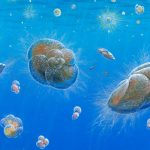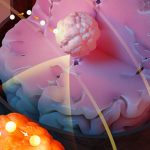A long, hard day of thinking can sometimes feel as exhausting as a day of manual labour, and experts think they know why.
A new study has found that people may feel tired after intense mental work because it causes potentially toxic by-products to build up in the prefrontal cortex part of the brain.
This alters a person’s control over decisions, so they shift toward actions that require no effort or waiting as mental fatigue kicks in.
The fatigue is a way of telling the brain to shut down in order to save itself.
Mathias Pessiglione of Pitie-Salpetriere University in France, said: “Influential theories suggested that fatigue is a sort of illusion cooked up by the brain to make us stop whatever we are doing and turn to a more gratifying activity.
“But our findings show that cognitive work results in a true functional alteration – accumulation of noxious substances – so fatigue would indeed be a signal that makes us stop working but for a different purpose: to preserve the integrity of brain functioning.”
The scientists monitored brain chemistry over a working day in two groups of people – those who needed to think hard and those who had relatively easier cognitive tasks.
Ransomware attack on NHS systems could take weeks to fix, major IT provider warns
‘Important new step’ in finding treatment for motor neurone disease, scientists reveal
Facebook defends itself after handing over chat messages to US police investigating abortion
In the first group, they observed signs of fatigue, including reduced pupil dilation, and people in that group made choices towards options proposing reward at short delay with little effort.
Read more from Sky News:
Tiredness blamed for quarter of fatal road crashes
The researchers added that this group had higher levels of a chemical called glutamate in the prefrontal cortex.
They say that this supports the theory that glutamate accumulation makes further activation of this part of the brain costly, so much so that cognitive control is more difficult after a mentally tough day of work.
The findings were published in the Current Biology journal.






















